
Promise Adebayo-Ige
University of Pennsylvania
Deuterium retention in liquid lithium plasma-facing components in fusion reactors
Promise Adebayo-Ige, Yuxin Yang, and Bruce E. Koel
The reaction of incident energetic deuterium (D) ions and atoms with surfaces plays a critical role in plasma-surface interactions in nuclear fusion experiments. Liquid metals, such as lithium (Li), offer solutions to significant problems of the plasma-facing components (PFC) in fusion energy systems. Lithium is a widely accepted candidate for PFCs because of its ability to retain D over a wide range of temperatures. In this study, temperature programmed desorption and Auger electron spectroscopy will be used to obtain quantitative measurements on D uptake and retention to elucidate the surface chemistry of Li coatings on metal PFCs in high power fusion energy devices. We will report data on the sticking coefficients and chemical characteristics of D ions in metallic and liquid Li films under ultra-high vacuum conditions.
Poster
Landon Bevier
University of Washington
Preliminary Study of Coronal Jets due to Spheromak Tilt Instability
Landon Bevier, Masaaki Yamada
Activity in the solar corona such as flares, coronal mass ejections, and coronal jets are driven by the release of energy through magnetic reconnection events. Understanding the mechanism(s) behind coronal jets has been long sought-after in solar and space physics. We propose coronal jets could be modeled by embedding a hemispherical spheromak-like closed field structure inside a large scale open field. In the boundary between these structures, current filaments form then undergo a reconnection event linking them to the open field lines, thereby allowing the filaments to become a plasma jet[1]. It is postulated that this reconnection event may be related to the global reconnection which occurs during the spheromak tilt instability. This paper explores the results from a preliminary experiment done on the Magnetic Reconnection Experiment (MRX) in which a spheromak is formed inside of an equilibrium field. Using a magnetic probe array and correlating fast camera data of the CII and CIII lines, the stability of this spheromak structure is analyzed and characterized.
Poster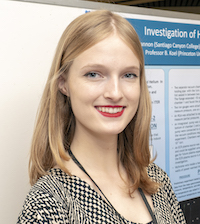
Natalie Cannon
California State University-Long Beach
Investigation of Fusion Ash Removal via Palladium Membranes
N. Cannon, C. Ruano Arens, S. Abe, S.A. Cohen, B.E. Koel
The Princeton Field-Reversed Configuration research experiment is a type of magnetic confinement device that utilizes odd-parity rotating magnetic fields to induce closed field lines, drive current, and heat the plasma. The fuel, D3He, that would be used in this type of device is aneutronic. While the D-3He fuel proposed for some fusion reactors is aneutronic, deuterium (D) ions in the plasma can fuse with each other to produce either tritium (T) or 3He. The T fusion ash must be extracted to avoid energetic neutron production in the plasma. D is low energy, ~50eV, while T is high energy, >100 keV One way of separating T from D is by introducing a high H permeability, usually high-Z, material to prevent energetic fusion ash from reentering the core plasma. Palladium (Pd) is a strong candidate. Pd has a high H sorption rate and permeability through conversion to a metallic hydride when heated to high temperatures, increasing H diffusion. Pure Pd would not separate the D from the T. However, introducing a thin (~0.1 μm) diffusion barrier beneath the surface would suppress the back-streaming of deeply implanted T.
Poster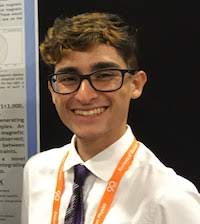
Carlos Catalano
University of Puerto Rico, Mayaguez
Tabletop Permanent Magnet Stellarator
Carlos Catalano, Arturo Dominguez, and Mike Zarnstorff
One of the leading magnetic plasma confinement configurations is the stellarator. With its unique non- symmetric shape, it provides a confining magnetic field without requiring plasma current. This reduces instabilities (when compared to tokamaks) and can confine fusion relevant plasmas. Current stellarators are built using irregularly shaped coils, which represent a challenge in design and manufacturing. PPPL, in collaboration with the Simons Foundation, is working on a new concept involving the use of permanent magnets for a fusion relevant stellarator experiment. This report presents the design of a PPPL tabletop stellarator, which tests the permanent magnet (PM) technology at a small scale. The purpose of this device is to showcase the innovative permanent magnet stellarator in a simplified and transportable fashion while keeping the cost and construction time low, at around $13,000. This device is envisioned to be portable enough, weighing around 500 lbs and integrated on a cart, to serve as an outreach platform to highlight the magnetic confinement configuration, while versatile enough to be used to study flux surfaces with different magnetic field geometries and strengths by changing the PMs positioning. The final toroidal field will be 300 Gauss with a gyroradius of around 1.3mm and a heat output of 2.7kW.
Poster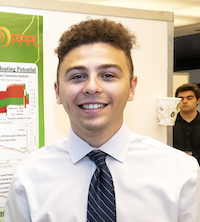
Justin Cohen
North Carolina State University
The Use of Divertor End Plates as Diagnostics in the Princeton Field Reversed Configuration II
Justin Cohen, Charles Swanson and Samuel Cohen
The Princeton Field Reversed Configuration utilizes odd-parity rotating magnetic fields to form and heat an FRC. The reactor includes three main compartments, the Center Cell (CC), Source End Cell (SEC), and Far End Cell (FEC). RMF power is deposited into the Center Cell where it is coupled to a low-density seed plasma that acts as a target. The goal of this experiment was to utilize the divertor plates within the end cells to characterize plasma parameters within those regions of the PFRC-2. It was then possible to use this data to understand particle and energy transport from the center cell. The divertor plate’s floating potential, as well as current to ground during RMF discharges were measured to quantify electron energy and density. At an RMF power of 70 kW, a floating potential of -700V was measured on the FEC divertor, which implies electrons with a temperature of 210 eV. An electron density of 9e9 electrons/cm3 at 49kW of RMF, was measured in the SEC using the grounded divertor. When the floating potential and current to ground were compared to data from the CC interferometer, there was strong agreement on oscillations seen during electron density decay.
Poster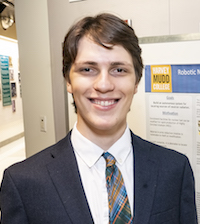
Harry Fetsch
Harvey Mudd College
Robotic Neutron Detector for Non-Proliferation Testing
Harry Fetsch, Rob Goldston
A robotic system was built to identify the location of neutron sources. Neutrons, subatomic particles emitted by many radioactive elements, can penetrate many kinds of shielding effectively because of their neutral charge. Neutron radiation levels differ between sources, for instance 235U is a radioactive isotope of uranium found in low concentrations naturally, but increased to high concentrations in weapons-grade uranium. Monitoring neutron levels is therefore of interest for determining whether nuclear fuel enrichment plants are being illicitly modified to produce more highly- enriched uranium for weapons.
Three neutron detectors inside a larger detector assembly, each capable of record- ing individual neutrons, were placed on a robotic base and used to measure neutron counts. Electronics hardware and software were developed to read counts and re- port data wirelessly, as well as to direct the robot both by remote control and au- tonomously. Monte-carlo simulation codes were also used to predict neutron counts at various locations and compare them with data obtained from neutron sources at PPPL.

Barbara Garcia
Manhattanville College
Analysis of Separation Efficiency of an Advanced Annular Couette Centrifuge in Open-Loop Mode
Barbara Garcia, Erik P. Gilson, Hantao Ji
Experiments on modified Taylor-Couette devices have shown that the fluids rotating in them have sufficiently low turbulence to allow for efficient centrifugal separation. The Advanced Annular Couette Centrifuge (AACC) has differentially rotating lids, a pump connected to several configurable inlets and outlets, and an inner and outer cylinder spinning in the same direction. The inner cylinder spins faster by no more than the squared ratio of the cylinder radius ratio to achieve high shear without inviting hydrodynamic instabilities. The differentially rotating lids are critical for controlling the turbulence at high Reynolds number. AACC holds 15 gallons of water and uses sub-micron titanium dioxide powder as the separation test particles. Various methods of measuring the powder concentration will be discussed, including laser refractometry and absorption spectroscopy, and results from the experiment will be compared with those of traditional centrifuges to look for improved separation, which could have important applications to a broad range of existing applications and open-up new application areas.
Poster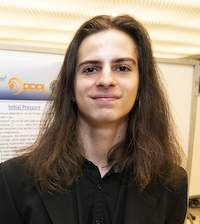
Gabriel Gonzalez Jusino
University of Puerto Rico, Rio Piedras
RMF Plasma Formation in the PFRC-2
Gabriel Gonzalez Jusino, Eric Palmerduca, Sam Cohen
The PFRC-2 is a plasma containment device that creates a steady, tenuous plasma that is then further ionized by pulsing a rotating magnetic field (RMF) at its center. This RMF plasma, denser and hotter than the initial plasma, is where electrons are heated. The next generations of PFRCs will also heat ions to temperatures higher than the surface of the sun, fusing their nuclei and releasing huge amounts of clean energy without nuclear waste. The purpose of this experiment was to further understand how the formation of this RMF plasma changes with the variation of the magnetic field that holds it, the power put into the initial plasma and the amount of gas (or fuel) that is put in the device to create the plasma. This analysis is done by examining a specific wavelength of visible light that is emitted during the RMF pulse as a result of electron energy transitions. Experimental data showed that, though its presence is essential for stable RMF plasma formation, the amount of power that goes into the seed plasma is not very influential at current operating conditions. Although some evidence suggests that this might not hold true at higher magnetic fields and powers. The delayed RMF breakdown is overshadowed by magnetic insulation caused by high axial magnetic fields, a phenomenon which prevents the azimuthal electric field induced by the RMF from creating an electron current. Research also showed the strong dependence the RMF breakdown has on the initial gas pressure via the electron and neutral particle density and ionization rate. Plasma formation mechanisms are considered.
Poster
A.C. Herschberg
University of Illinois, Urbana-Champaign
Temperature Evolution of Evaporative Li Coatings in LTX-β
A.C. Herschberg, E.T. Ostrowski, A. Maan, B.E. Koel
Plasma-material interactions (PMI) strongly influence lifetimes of plasma facing components (PFCs) and overall plasma performance. The choice of low-Z PFCs such as lithium offer attractive features such as lower radiative power loss and the possibility to operate in a flat temperature profile regime, as demonstrated by evaporative coatings on LTX-β. We present X- ray photoelectron spectroscopy (XPS) analysis of an aged witness sample, exposed to partial vents, using the Sample Exposure Probe (SEP), a portable ultrahigh vacuum (UHV) chamber, which introduces samples to LTX-β. This witness sample is transported to a surface analysis station in the Surface Science and Technology Laboratory (SSTL) at Princeton Plasma Physics Laboratory (PPPL). Evaporative lithium coatings on the witness sample are analyzed using XPS to make observations on the effects of the LTX-β environment on the first wall. The XPS analysis illustrates the conversion of the Li coatings to Li2CO3 in residual vacuum. Upon heating, the aged witness sample of Li2CO3 decomposes, starting at 400K, to form Li2O, which is stable, only reacting with trace amounts of water vapor overnight to form LiOH. Therefore, heating all PFC’s to 500K is proposed as a new surface conditioning technique for LTX-β, as it removes all contaminates, leaving only Li2O and fragments of LiOH.
Poster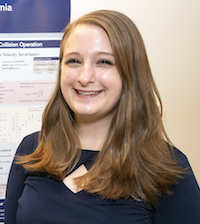
Courtney Johnson
Rowan University
Modeling and Testing Flowing Gas in Eunomia
Courtney Johnson, J.A. Schwartz, R.J. Goldston
B2.5-Eunomia is a code that couples kinetic neutral and multifluid plasma models. Eunomia was developed as a replacement for Eirene with a focus on linear geometries. This makes it suitable for modeling experiments such as those involving linear plasma generators. Prior to this work, Eunomia did not possess any integrated tests. The purpose of the work was to develop regression test cases to verify the operation of the code. In order to develop these tests, a new boundary condition for flowing gas was added. This boundary condition can be used to validate the code against analytic solutions as well as to model the neutral particles that flow adjacent to a plasma beam. This boundary condition was used to test the Galilean invariance of the collision operation. The unexpected results led to a further investigation of the collision frequency. It was found that the collision operation is Galilean invariant, but the boundary condition fails to generate a uniform density. The results were also inconsistent with analytical expectations. These issues demand deeper investigation into how Eunomia performs collisions.
Poster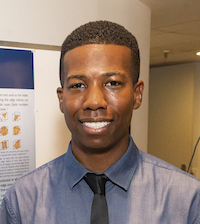
Jamal Johnson
Pittsburg State University
NSTX-U Neutron Flux VR Visualization
Jamal Johnson, Jonathan Klabacha
The goal of this work was to develop a 3 dimensional virtual reality (VR) visualization technique for neutron flux (abbreviated as n-flux) throughout the room housing the National Spherical Torus Experiment Upgrade (NSTX-U) tokamak scheme fusion reactor. The primary application of the project is the protection of electronics around the reactor from intense n-flux. To achieve this, visual identification of n-flux location boundaries in a virtual 1:1 scale representation of the NSTX-U room was needed. Produced during fusion, high intensity neutrons resonant in energy with materials such as silicon-28 (common in electronics) are of great concern. When in resonance with the 28Si nucleus, the probability of a damaging collision occurring becomes high. This makes n-flux within this energy range significant to engineers and physicist who rely on external components to function properly. Simulated neutron data within the NSTX-U and the surrounding area was obtained via the radiation modelling program Atilla. Visualization of the data was done through adaptation of the Marching Cubes algorithm. This technique ultimately constructs a single valued surface (or isosurface) through a volume of space. Using the real-time 3D development platform Unity, a VR environment was created that visualized neutron flux isosurfaces. Grid data of flux specifically for neutron energies at resonance with 28Si nuclei were implemented and inspected in VR.
Poster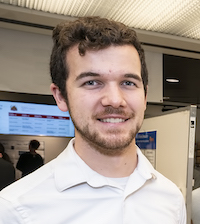
Joshua Latham
Princeton University
Laboratory Experiment for Exploring Solar Flux Rope Stability
Joshua Latham, Hantao Ji
Magnetic flux ropes (MFR) on the solar surface are thought to be the precursors of coronal mass ejections (CMEs). In some cases where an MFR is torus-unstable, magnetic self-organization events may reduce the energy and prevent an eruption. These self-organization events conserve helicity over their timescales, and for toroidal plasmas Taylor showed that the profile of μ ≡ J.B/B^2 is constant for the minimum-energy state. The Magnetic Reconnection Experiment (MRX) was outfitted with electrodes in order to create MFR. An array of over 300 in-situ magnetic probes was used to capture a 2D cross-section of the magnetic field. In this poster, the dynamics of μ ≡ J.B/B^2 is more closely examined for correlations with the behavior of the MFR and for signals of Taylor relaxation.
Poster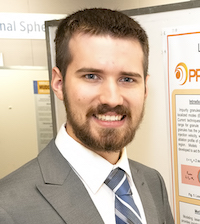
Joshua Luoma
University of Wisconsin-Platteville
Laser Propulsion and Ablation Profiles of Impurity Granules in Fusion Reactors
J. Luoma, A. Diallo
Laser propulsion of granules offers a high-precision approach to the injection of impurity pellets into the plasma of fusion reactors. The conceptual design of a laser injector is proposed along with a power law relating injection velocity to laser pulse energy. A 500-mJ pulse is expected to achieve injection velocities upwards of 400 m/s for a 100-μm diameter lithium granule. The velocity acquired during laser propulsion has significant impacts on the distribution of ablated mass within the plasma region. The spherically symmetric vapor-shielding model was employed to demonstrate how penetration depth and velocity.
Poster
Marco Andres Miller
Columbia University
A machine learning algorithm for the nonlinear Fokker-Planck-Landau collision operator in XGC
Marco Andres Miller, Michael Churchill
Laser propulsion of granules offers a high-precision approach to the injection of impurity pellets into the plasma of fusion reactors. The conceptual design of a laser injector is proposed along with a power law relating injection velocity to laser pulse energy. A 500-mJ pulse is expected to achieve injection velocities upwards of 400 m/s for a 100-μm diameter lithium granule. The velocity acquired during laser propulsion has significant impacts on the distribution of ablated mass within the plasma region. The spherically symmetric vapor-shielding model was employed to demonstrate how penetration depth and velocity.
Poster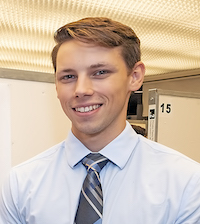
Colin Myrick
Saint Michael's College
Influence of plasma profiles on particle deposition in Wendelstein 7-X like simulation
Colin Myrick, Samuel Lazerson
An investigation of Beam Emission Spectroscopy (BES) signals subject to different plasma profiles is simulated for a Wendelstein 7-X (W7X) like configuration with the BEAMS3D code. BEAMS3D is a guiding center particle code that follows user defined particles and models neutral beam injection. A study is performed of the influence of plasma profiles on the particle deposition model. A goal of this study is to assess whether BES data can be used to constrain plasma density profiles. Simulation with different numbers of injected particles is being explored to assess incorporation of the BES forward model into STELLOPT for equilibrium reconstruction. As BEAMS3D is a Monte-Carlo code, the number of particles can play an important role in interpretation of results. Should a smaller number of starting particles produce comparable results, we can greatly reduce the runtimes and space needed when running the simulations.
Poster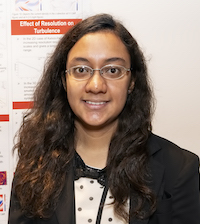
Samantha Pereira
Cornell University
Diagnostics for Turbulence in Plasmas
Samantha Pereira, James Juno, Ammar Hakim, Jason TenBarge
Turbulence is a complex phenomenon which characterizes certain fluid flows. Developing tools to extract statistics from turbulence is an integral part of un- derstanding this phenomenon. To model turbulence, two- and three-dimensional fluid and kinetic simulations are performed using the Gkeyll code. This project focuses on creating general tools to understand the impact of various parameters on turbulence spectra, detecting and characterizing intermittent structures such as blobs and current sheets, and minimizing resolution requirements to extract a given structure and scale in a plasma.
Poster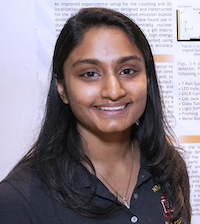
Esha S. Rao
Rutgers University
Improved Experimental Setup for the Read Out of Superheated Emulsion Bubble Detectors
Esha S. Rao, M. Hepler, R.J. Goldston
An improved experimental setup for the counting and 3D localization of bubbles has been designed and constructed for the accurate read out of superheated emulsion bubble detectors. Since 1979, bubble detectors have found use in dosimetry, radiation alarms, and potentially nuclear warhead verification. Droplets suspended in a gel matrix undergo a phase transition when struck by high-energy neutrons in the detectors and are easily counted using optical methods. However, at high fluence the accuracy of counts is reduced due to occultation.
Poster
Luquant Singh
University of Wisconsin Madison
A New Method For The Optimization of Finite Build Stellarator Coils
L. Singh, T. Kruger, C. Zhu, S. Hudson, A. Bader, D.T. Anderson
To date, all major stellarator coil optimization codes, such as FOCUS, ONSET, REGCOIL, COILOPT++, and NESCOIL ultimately produce current-carrying single filament coils. In reality, stellarator coils have finite depth and thickness, which can make the single filament model a poor approximation, particularly when coils are placed close to the plasma. The finite build of a coil, termed the "winding pack", can be approximated by a multi-filament model. In this model, each coil is comprised of a set of closely packed single filaments. In this model, the torsion of the winding pack is not determined a priori and is a parameter that should be optimized over. Here we present a new method to construct stellarator coils with a finite build given a set of single filament coils; we also provide a mechanism to optimize for the winding pack torsion using the multi-filament model. The method is applied to compare the difference in fidelity, to producing a desired magnetic boundary, between the single filaments, unoptimized multi-filaments, and optimized multi-filament coils.
Poster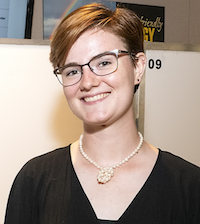
Marion E. Smedberg
Eindhoven University of Technology
Applying Deep Learning to GPI data to analyze plasma edge turbulence
Marion E. Smedberg, David R. Smith, Stewart J. Zweben
Understanding the edge dynamics of magnetically confined plasmas is an important aspect of increasing confinement and, eventually, putting fusion power on the grid, especially for large fusion machines such as ITER. This project used deep learning (DL) methods to analyze diagnostic data from the plasma edge of NSTX; the goal was both to search for unidentified patterns and to lay the groundwork for future DL projects in plasma physics. We found that DL techniques can accurately (>95%) classify plasma images taken from the same shots as those used in training, as well as find patterns relevant to classification.
Poster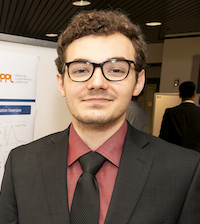
Jace Christian Waybright
South Dakota State University
Piezo-thermal effect in gas and plasma
J.C. Waybright, E.J. Kolmes, S. Davidovits, I.E. Ochs, N.J. Fisch
When compressed, a gas immersed in a potential field has been pre- dicted to develop a temperature differential reported by Geyko [Phys. Rev. E 94 042113 (2016)]. This phenomena, called the piezo-thermal effect, results in hot and cold regions corresponding to the locations of the maximum and minimum potential energy respectively. Previ- ous numerical simulations confirmed this temperature differential for centrifugal and gravitational potentials. Although plasma features a number of complications, similar effects might also be imagined in compressing plasma. In this study, the effect was investigated using a coulomb collision operator and adjusting the interaction strength between particles. The behavior of the temperature differential was similar to that of the neutral gas case, and the damping of its oscil- lation was heavily dependent on the ratio of mean free path to sys- tem length, lm/L. Population inversions were also briefly investigated using both a simple analytic model and computational simulations. Future work is aimed at further investigating population inversions and the conditions in which they occur.
Poster
Eric Wolf
Lehigh University
Characterization of a Flexible Surface DBD Device
Eric Wolf, Sophia Gershman
When compressed, a gas immersed in a potential field has been pre- dicted to develop a temperature differential reported by Geyko [Phys. Rev. E 94 042113 (2016)]. This phenomena, called the piezo-thermal effect, results in hot and cold regions corresponding to the locations of the maximum and minimum potential energy respectively. Previ- ous numerical simulations confirmed this temperature differential for centrifugal and gravitational potentials. Although plasma features a number of complications, similar effects might also be imagined in compressing plasma. In this study, the effect was investigated using a coulomb collision operator and adjusting the interaction strength between particles. The behavior of the temperature differential was similar to that of the neutral gas case, and the damping of its oscil- lation was heavily dependent on the ratio of mean free path to sys- tem length, lm/L. Population inversions were also briefly investigated using both a simple analytic model and computational simulations. Future work is aimed at further investigating population inversions and the conditions in which they occur.
Poster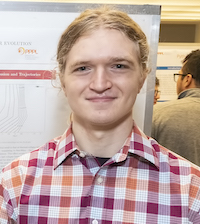
Oleksandr R. Yardas
Grinnell College
Runaway electron seed population dependence on temperature profile using continuous electric field evolution
Oleksandr R. Yardas, Ola Embreus, Chang Liu, Dylan P. Brennan
Runaway electrons (REs) are a serious risk to the operational stability of ITER. One of the least understood aspects of RE generation is the dependence of the seed population on the time history of the plasma tem- perature and electron density. We implemented a continuous evolution scheme for the plasma electric field in CODE (COllisional Dependence of Electrons) to study this dependence over a grid of tanh temperature profiles varying in initial temperature and steepness. With this scheme we see good qualitative agreement of the behavior of the electron distribution with theory and experiment. We find a steep transition of over 30 orders of magnitude in the size of the RE seed population between temperature collapse times of 8-80 ms.
Poster